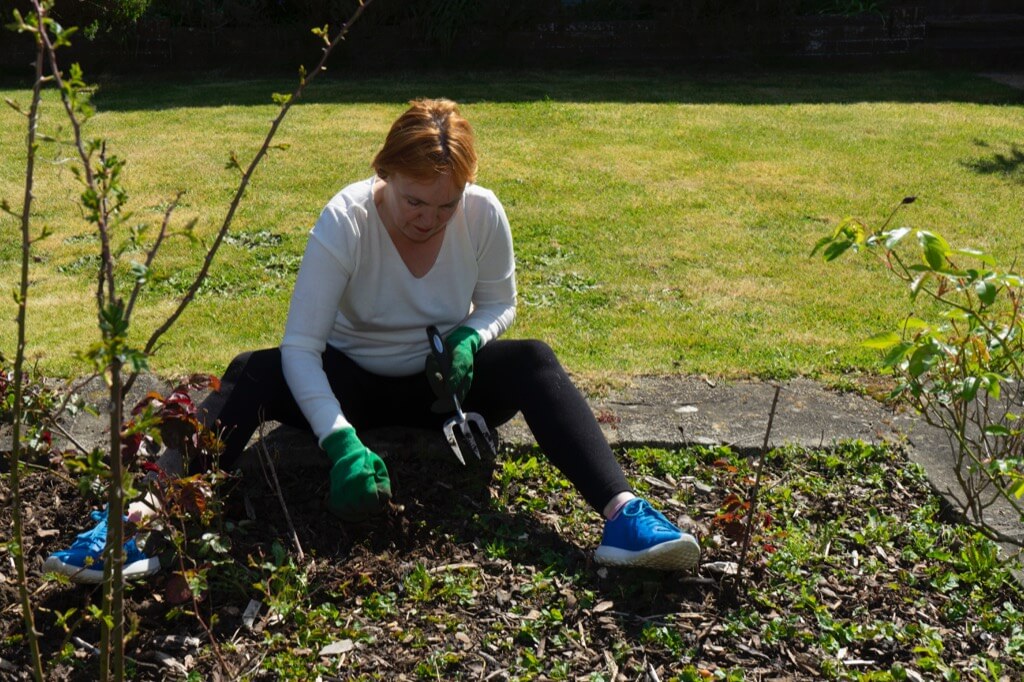‘Garden Weeds’ often conjures images of unwanted, stubborn plants in gardens and farms. However, the definition is more nuanced than it appears. Garden weeds typically grow where it is not desired, especially in places like gardens, farms, or lawns. What makes a plant a weed is its location and impact rather than its inherent characteristics. This perspective redefines weeds as plants growing contrary to human intentions and desires.
Within botany and agriculture, the classification of weeds is highly subjective and varies significantly from region to region. This subjectivity is evident when observing the differing lists of noxious weeds maintained by various states in the United States and the federal list. For example, while a baby’s breath (Gypsophila paniculata) is cherished for its delicate beauty in floral arrangements, it is considered a weed in California. Similarly, the ox-eye daisy (Chrysanthemum leucanthemum), often admired for its simple charm, is listed as a weed in several states, including West Virginia and Colorado. This divergence highlights the complex nature of weed classification, often influenced by local environmental conditions and specific agricultural needs.
The determination of whether a plant is a weed or a desirable species is intricately linked to the local environment and agricultural requirements. This relationship is particularly evident in South Africa, given the country’s diverse ecosystems and varied farming practices. A plant deemed beneficial or harmless in one region might be classified as a weed in another due to its impact on local flora, fauna, or agricultural productivity. This localized assessment reflects the unique ecological balances and agricultural objectives specific to different areas within the country.
South Africa’s unique climatic zones and rich biodiversity present a distinct context for understanding garden weeds. The country’s approach to weed management involves considering the ecological and agricultural implications specific to its diverse environments. This localized perspective is essential for effective weed control and environmental conservation. For instance, a plant may be categorized as a weed in one South African province due to its invasive nature and detrimental effects on local ecosystems. In contrast, it might be unproblematic in another region.
The role of certain plants can dramatically shift depending on the environment and plant type. A wild raspberry plant, for instance, may be valued for its fruit but can overrun a farmer’s strawberry field. Depending on location and impact, the same plant can be a valuable asset or a detrimental weed. In some regions, invasive species threaten native flora and are thus labeled as weeds. However, plants like the broom (Cytisus scoparius), used for landscaping in Scotland, are considered invasive and harmful in Australia, New Zealand, and parts of North America.
The perception of weeds has evolved. In the past, weeds were sometimes inadvertently spread along with crop seeds. In some instances, farmers intentionally grew what are now considered weeds, believing they would benefit other plants. For example, sweet briar was initially cultivated in New Zealand for rose grafting but later became problematic due to its invasiveness.
Identifying The Characteristics of Weeds
Weeds are notorious for their remarkable resilience and adaptability, making them a persistent challenge in various environments:
- Weeds often flourish in disturbed environments such as construction sites, overgrazed fields, and tilled farmland. Their ability to quickly colonize these areas is critical to their resilience.
- Weeds can adapt to various environmental conditions, including temperature extremes, moisture, and soil quality. This adaptability allows them to survive in conditions where many other plants would fail.
Rapid Growth and Spread
The ability of weeds to grow and spread rapidly is a defining characteristic:
- Many weeds have a significantly faster growth rate than other plants, allowing them to dominate an area quickly.
- Weeds often produce many seeds that effectively disperse wind, water, animals, or human activities.
Seed Longevity and Prolific Production
Weeds are particularly adept at ensuring their long-term survival through their seeds:
- Weeds typically produce abundant seeds, increasing their chances of survival and spread.
- The seeds of many weed species are highly durable and capable of remaining dormant in the soil for many years before germinating.
Challenges in Weed Management
The characteristics of weeds make them challenging to manage and control:
- Once established, weeds can be difficult to remove from an area, often requiring ongoing management efforts.
- Some weeds have developed resistance to standard control methods such as herbicides, requiring more innovative and varied approaches to management.
Weeds on Agriculture
Weeds pose significant risks to the health and quality of crops in agriculture. They compete with crops for essential resources such as sunlight, water, and nutrients, often resulting in stunted growth and reduced yields of the cultivated plants. This competition can be particularly severe in areas with limited resources, where weeds can outcompete crops and significantly impact agricultural productivity.
One of the critical concerns in agriculture regarding weeds is their role in contaminating crops. Weeds can harbor pests and diseases, which may be transmitted to nearby crops. This spread of pests and pathogens can significantly damage crops, requiring additional pest and disease management efforts. Furthermore, certain weed species are known to act as hosts for crop diseases, effectively serving as reservoirs that exacerbate the spread of infections.
During colder months, some weeds provide shelter and breeding grounds for harmful insects. Once harbored in the weeds, these insects can infest adjacent crops when conditions become favorable. This situation increases the difficulty of controlling these pests and leads to additional crop losses during the growing season.
Another concern is the production of toxins by certain weed species. These toxins can harm crops and humans, mainly when they contaminate food crops. Consumption of crops contaminated with toxic weeds can pose health risks to humans and animals, leading to potential food safety issues. Managing these poisonous weeds is crucial to ensure the safety and quality of agricultural produce.
Weeds can also affect the efficiency of harvesting and post-harvest processes. Dense weed growth can obstruct crop access and make mechanical harvesting more challenging and time-consuming. Additionally, the presence of weeds in harvested produce can reduce the quality of the crop, increasing the costs and efforts required for post-harvest cleaning and processing.
Our Top Tips For Home Weed Management
How To Identify Garden Weeds in Your Garden
- Notice plants that grow aggressively and seem out of place in your garden. Weeds often grow more rapidly than your intended plants and can quickly take over an area.
- If you spot a plant you didn’t sow or plant, it’s likely a weed. Please familiarize yourself with ordinary garden plants in your area to distinguish them from potential weeds.
- Many weeds have robust root systems that make them hardy. It might be a weed if you find a problematic plant to uproot.
Weed Management
- Stay vigilant in your garden. Regularly remove weeds as soon as you spot them, preferably before they flower and produce seeds.
- Applying a layer of mulch can suppress weed growth by blocking sunlight. Organic mulches like wood chips or straw can also improve your soil as they decompose.
- Minimize tilling or turning your soil frequently. Disturbing the soil can bring dormant weed seeds to the surface and promote their growth.
- Use tools like hoes or hand weeders for effective weed removal. These tools can help you uproot weeds without causing too much disturbance to your garden plants.
How To Prevent Weed Spread
- Dispose of Weeds Properly: After uprooting weeds, dispose of them away from your garden to prevent seeds from spreading. Avoid composting flowering or seeding weeds, as they can germinate later.
- Use Barrier Methods: Consider using landscape fabric or barriers in areas prone to weed growth. This can prevent weeds from taking root in the first place.
- Select Resistant Plant Varieties: Opt for plant varieties known for their resistance to local weeds. These plants can compete more effectively against weeds, reducing their spread.
Eco-Friendly Weed Control
- Pour boiling water over weed-prone areas. This method is effective for spot-treating weeds in pavement cracks or edges.
- Use vinegar as a natural herbicide for spot treatment. Be cautious, as vinegar can harm your garden plants as well.
- Promote a garden ecosystem that supports beneficial insects. These insects can naturally keep weed-related pests in check.
It’s a thin line between a valued plant and a garden outlaw; often, the difference lies in the eye of the beholder. What makes one plant a cherished part of your garden while another is relegated to the ‘weed’ category? It’s all about location and impact. A plant growing in an unwanted spot or outcompeting your favorite flowers for sunlight and nutrients is typically labeled a weed.
But wait, is there more to these green outcasts? Definitely! Weeds can be resilient survivors, adapting to environments where more delicate plants wouldn’t stand a chance. They can even offer unexpected benefits, like attracting pollinators or enriching the soil.




